Split-Level House: What They Are and the Types

When you’re checking out homes to buy in your area, there’s one architectural style you might skip over. With their staggered levels and retro curb appeal, split-level homes are seen by some homebuyers as outdated, inconvenient, and a little awkward. But these houses also come with plenty of perks, like a lower price tag, less competition, and lots of space and privacy.
Here’s what you need to know about split-level homes:
What is a split-level house?Types of split-level housesSplit-level vs. bi-level houseShould you buy a split-level house?
What is a split-level house?
A split-level home contains at least three levels of living space separated by short flights of stairs. From the main floor, one set of stairs goes up to the bedroom area and another goes down to a basement level.
There’s plenty of storage space, too, as split-level homes tend to come with finished basements, multiple attics, and integrated garages.
These homes share many of the same features, such as:
Half staircasesLow-pitched roofsDouble-hung windows and bay windowsEfficient use of spaceMinimal exterior design featuresMixed building materials, such as vinyl siding and brickBackground: “Split-level” refers to a home-construction style that was mass produced in the 1950s and became popular in the 1960s and 1970s.
In recent decades, however, this style has fallen out of favor. Only 2% of homeowners said they prefer the split-style floor plan in a recent construction and remodeling trends report conducted by home remodeling website Fixr.
Types of split-level houses
It’s a good idea to explore all your options if you’re buying a home in an area with multiple split-level houses. While most will follow a basic split-level house plan and come with similar features, there are several architectural styles to choose from:
Back split
A back-split home is divided into multiple levels, but you can only see one story when standing outside on the curb. The split levels can only be seen when you walk to the side of the house, while two stories are visible from the back.
When shopping around for your next home — whether it’s a split-level home or not — be sure to shop around and compare mortgage rates. Doing so can potentially save you thousands of dollars in interest over the life of the loan. Credible lets you easily compare rates from our partner lenders.
Find Rates Now
Side split
A side-split house, where you can see all levels from the curb, is the most common type of split-level home.
Side-split homes are typically divided into two distinct sides: On one side, the garage is built on the bottom floor with the bedrooms stacked on top to create the middle floor. The kitchen and main living spaces are on the other side of the house, connected by a half-flight of stairs to form the upper floor.
Stacked split
Stacked split homes have multiple floors (typically four or more) with the same number of half-staircases. These are often structured with a basement or informal living area at the bottom level with a kitchen and dining room above, then bedrooms stacked on top. The home entrance is at ground level between the bottom- and middle-level floors.
Standard split
In a standard-split home, the entrance is at the ground level and a short set of stairs leads to the other levels. The bottom level typically includes a garage, while the middle level has the main living-area rooms such as the kitchen, dining room, and living room. The bedrooms and bathrooms are all located at the top level.
Split-level vs. bi-level house
Some people use the terms bi-level and split-level interchangeably, but they refer to two distinct home-construction styles. Here are the main differences between the two styles:
Split-levelBi-levelHas at least three levels separated by half-staircasesHas only two levels separated by a full staircaseEntrance is typically located on the middle floorEntrance to the home is located on the bottom floorCommon living areas are often located on the main level, bedrooms on a level above, and a basement or family room in the area belowLower level may contain the bedrooms and bathrooms, while the upper level has the other main living spaces, such as a family room, dining room, and kitchenLiving areas are distinctly separatedMay have open floor plan
Pros and cons of a split-level house
Pros
Better separation between floors: The downstairs and upstairs areas are separated by half-staircases, which helps contain noise and provides more privacy. Potentially more affordable: Because these homes have been out of demand for a few decades, they may have lower price tags compared to other styles of homes. More outdoor space: Even if the lot size is rather small, split-level homes stack the living space vertically. The efficient use of space leaves more room in the backyard for recreation.
Cons
Difficult to remodel: Because each level of a split-level home is built with a specific purpose in mind — and they’re separated by half-staircases — the layout isn’t conducive to major changes.Lots of stairs: Split-level homeowners will need to climb staircases every day to get to another part of the house. This might be fine for some families, but it could be more complicated for aging seniors, people with disabilities, or families with small children.Potentially harder to sell: You can improve your home’s curb appeal, but some buyers may still see split-level homes as outdated or awkward. And because many split-level homes were built in the 1950s, your home may need some updating before putting it on the market.
Should you buy a split-level house?
The answer comes down to the availability of homes in your area and what you’re looking for. You may have noticed that home prices have increased and housing inventory has shrunk within the last year or two. That could leave you with fewer choices when shopping for a home.
But a split-level house may be priced lower than ranch-style homes in your area with a similar square footage. And, because they’re less desirable, you may have fewer buyers to compete against. These factors might make split-level homes more appealing to you.
Other perks to consider: Split-level homes often come with more privacy and lots of extra space, which you can use as a home office or a recreation area. Just be sure you’re OK with having to climb stairs every day, and know that it may be harder to sell the home when you’re ready to move.
Keep Reading: How to Know If You Should Buy a House
The post Split-Level House: What They Are and the Types appeared first on Credible.
Did you miss our previous article…
https://www.coloradomicrofinance.org/?p=60
15 Home Improvement Projects to Complete Before You List Your Home
If you’re planning to list your home for sale, you’ll want to make a great first impression. That usually means making a few repairs and upgrades, inside and out.
Here are 15 home improvements you might want to complete to help your home sell quickly — and at the best possible price:
Paint the exterior of your housePaint the interior of your houseRefinish or replace flooringFix or replace window and door screensRemove wallpaperRefresh countertopsReplace light fixturesDeep clean your homeGet a new roofSpruce up your landscapeCreate an outdoor living spaceHave your home stagedFix leaky plumbingCorrect obvious safety problemsReplace knobs and handles
1. Paint the exterior of your house

Few things can revitalize a house like a fresh paint job. The prep work will eliminate many of your home’s blemishes — like chips and cracks in the trim — to help it look newer.
More than just an aesthetic update, painting the exterior also prevents moisture and termite damage and helps the home stay in good condition for many years to come.
If a full paint job is not in your budget, consider having a professional pressure wash your home and touch up any areas where the paint is chipped or flaking.
2. Paint the interior of your house

Painting the inside of your house is a cost effective way to spruce it up. It’s also fairly easy if you have a steady hand and an eye for detail. Just make sure you can complete the proper preparations. That means cleaning the walls, filling and sanding holes, taping off trim, and protecting floors with drop cloths.
You can paint an entire room in a day or two, and with some planning you could do all the rooms in your home over a few weekends. Consult with your real estate agent about the best neutral colors to appeal to a wide range of buyers and ask your local paint store about the best tools and paint for the job.
Not Moving? Refinance Your Mortgage Quickly: Find a Better Rate and Prequalify in Just 3 Minutes
3. Refinish or replace flooring
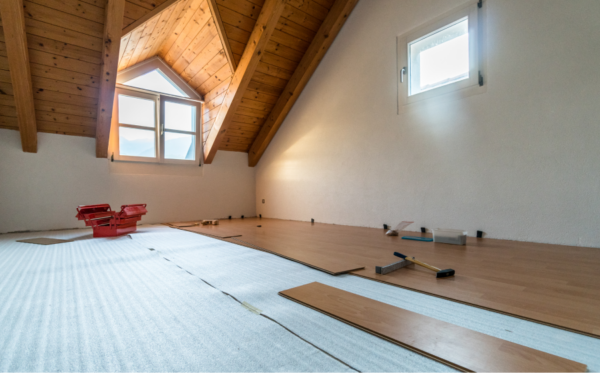
Historic wooden floors are often an essential part of a home’s character and a desirable feature for buyers. They can also be refinished if they’re not looking their best anymore. Durable tile, stone, and engineered hardwood can look good for decades with the proper care.
But if you have old carpet or worn-out vinyl, replacement may be your best bet. Old carpet harbors stains, smells, and allergens; old vinyl can make your home look cheap. Ask your real estate agent for advice on the most popular flooring choices in your area and consider making a replacement.
If you’ll be selling your home with its existing floors, consider having them professionally cleaned. This affordable option will still help your home show better (and possibly smell nicer, too).
4. Fix or replace window and door screens
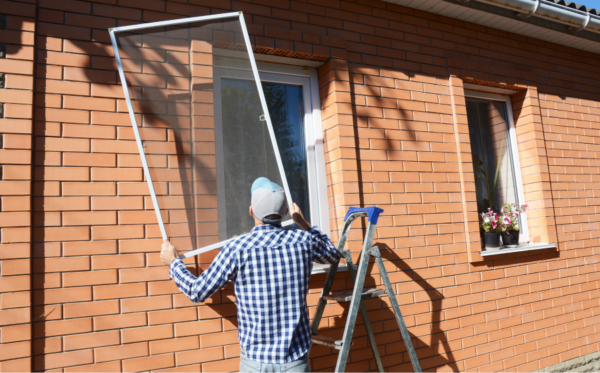
Bent or torn window and door screens, especially on the front of your home, leave your property looking neglected. Plus, damaged screens can’t do their job of letting fresh air in while keeping insects out.
Low-cost fixes include cleaning and patching (or completely removing) damaged screens. An ideal solution, if it fits your budget, is to replace the screens with new ones.
If you’re handy, you can replace them yourself. Otherwise, professional services are available to measure and install custom window screens onsite at your home. And if you’re not in a hurry, you can take the measurements yourself and order custom screens online.
5. Remove wallpaper
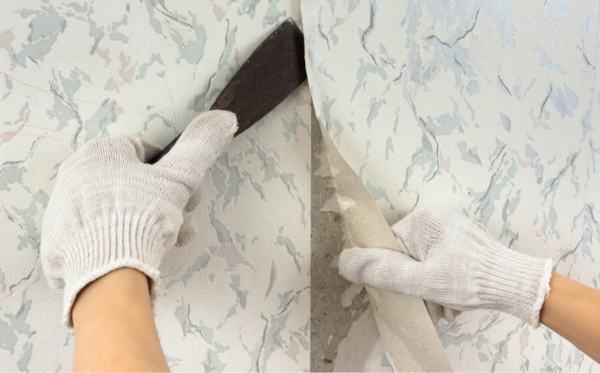
Wallpaper can make a striking impression, but not always a good one. Tastes in patterns and textures vary more than tastes in paint colors, and buyers won’t be excited about the messy and time-consuming prospect of removing an unsightly wallpaper. Taking care of this task before listing your home will put it one step closer to being turnkey.
Get Inspired: 18 Home Improvement Projects You Can Wrap Up in a Day
6. Refresh countertops
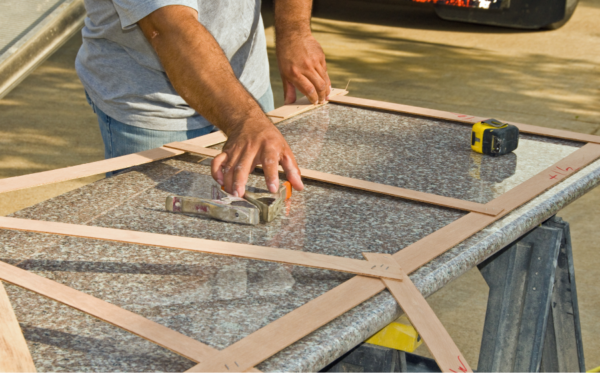
After the exterior, the kitchen may be the next most important thing for catching a buyer’s attention. While a full kitchen remodel is a time-consuming and expensive undertaking that is unlikely to provide a good return on your investment, replacing outdated or worn-out countertops is a simpler solution that can make a big difference.
If that’s out of the question, look into resealing, resurfacing, or refinishing. The best option will depend on your countertop material.
7. Replace light fixtures

Older homes often have older fixtures, or mismatched fixtures from a variety of decades. New light fixtures, both inside and out, can update a home’s look for minimal expense and effort. They can also help you create a cohesive style, from traditional to mid-century modern to contemporary.
When you replace the fixtures, you can also install smart light bulbs. These allow you to adjust each bulb’s color, temperature, and brightness right from your phone to create the perfect ambience. Plus, these bulbs use energy-efficient, money-saving LEDs and last for years.
8. Deep clean your home

Even if you’re still living in your home until it sells, a deep clean before listing it will make a big difference. We all become somewhat blind to the hard water stains by the sink, the dust on our drapes, and the grime on our windows. If scrubbing isn’t your favorite form of stress relief, hire a professional cleaning service. They’ll knock out these tasks and many more to make your house sparkle.
9. Get a new roof
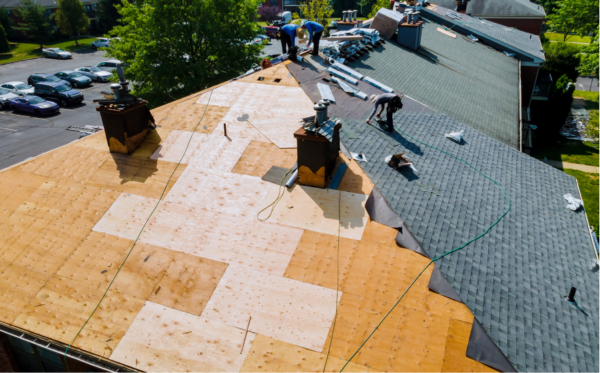
A new roof is not a glamorous or exciting home improvement project. It’s also not an expense future homeowners want to deal with. What they do want is the security of knowing that the major purchase they’re about to make won’t suffer water damage from a leak the next time it rains. If your roof is nearing the end of its life, consider getting some bids to replace it.
It’s possible that this project will be too costly to be worth the investment, and it’s not a good place to test your DIY skills. But do keep in mind that if a buyer’s home inspector says your roof is shot, you might have to lower your asking price.
Related: Home Improvement Loans
10. Spruce up your landscape

Curb appeal is the first thing a prospective buyer will notice when they come to your home, and your yard can make or break their impression. Bright flowers and neatly trimmed hedges will help them envision the compliments their guests will give them at the housewarming party. Weeds will make them wonder how much to budget for gardening service.
Also keep in mind that less is more. Buyers will appreciate a clear view of the house, so if your trees are overgrown or your potted plant collection has overtaken the front porch, look for ways to scale back.
11. Create an outdoor living space
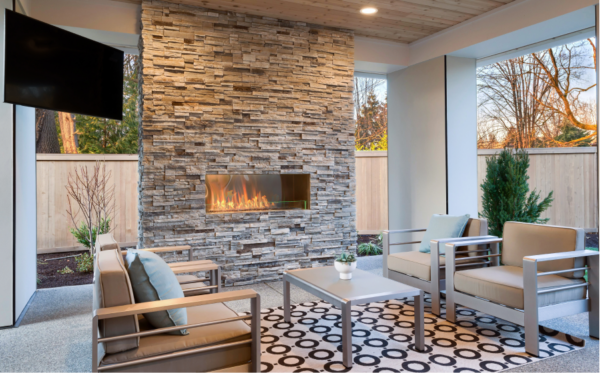
Speaking of guests, many buyers love the idea of relaxing and entertaining in the backyard. Try to convince them that your home is the place to do it (after they buy it, of course).
You don’t need to build an outdoor kitchen to check this item off your list. Simply create an outdoor space that suggests an inviting place to gather, like four comfortable chairs around a fire pit or a long picnic table with colorful place settings.
12. Have your home staged

The most functional items for comfortable living, like reclining sofas and blackout curtains, usually aren’t the most attractive options for showing off your home. That’s why you might want to use a home staging company.
Home staging is technically not a home improvement, but it will make your home massively more appealing to buyers. A professional designer’s staging tricks and arsenal of furniture and decor can make your home look like the bright, airy, and on-trend “after” shots from your favorite home improvement show.
13. Fix leaky plumbing

Similar to replacing the roof, this one’s not exciting. But if buyers see a dripping faucet or shower head, they might wonder what other maintenance you’ve neglected.
If your fixtures are fancy, they may be worth repairing. Otherwise, a replacement might be the best option, especially if the repair would be labor intensive or the fixture is old. Consider enlisting a handyman or plumber for this work if you’re not interested in crawling under the sink.
Also See: 8 Popular Pandemic Home Renovations to Transform Your Space
14. Correct obvious safety problems
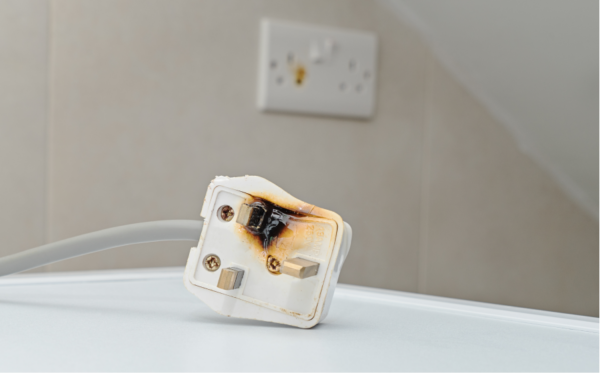
If your smoke detectors don’t work, the furnace is broken, or the stair railing is loose, buyers (or at least their home inspectors) will notice.
Similar to leaky faucets, safety issues are a sign of neglect. They can also prevent buyers from getting approved for certain mortgages. Bite the bullet and pay for these repairs up front.
15. Replace knobs and handles

Here’s a project almost anyone can crank out with a ratcheting screwdriver and a trip to the hardware store. Unscrew all the scratched up and worn out drawer handles and cabinet knobs in your kitchen, bathrooms, and laundry room and replace them. Make sure to select new ones with the same hole alignment. This minor improvement can make a surprisingly big difference, especially if your hardware is dated.
Consider a cash-out refinance
A cash-out refinance can help you pay for multiple home projects and lower your mortgage rate. It can be a good choice if you’re not moving anytime soon. If selling is in your shorter-term plans, consult with your real estate agent to go over the most profitable home improvements that’ll help you sell your home.
Credible can get you started with your cash-out refinance. You can compare loan options from all of our partner lenders and get prequalified rates in just a few minutes.
Get the cash you need and the rate you deserve
Compare lendersGet cash out to pay off high-interest debtPrequalify in just 3 minutesFind My Loan
No annoying calls or emails from lenders!
Trustpilot
The post 15 Home Improvement Projects to Complete Before You List Your Home appeared first on Credible.
How to Get a Mortgage With a 600 Credit Score

If you want to get a mortgage but your credit score needs work, you might think homeownership is out of reach. But you don’t need perfect credit to get a home loan. It’s possible to get a mortgage with a 600 credit score.
Check out some of the home loan programs with flexible credit requirements — and how you can improve your credit score to get better terms:
Can I buy a house with a 600 credit score?Mortgage loans for a 600 credit scoreHow to improve your credit score
Can I buy a house with a 600 credit score?
A 600 credit score is high enough to get a home loan. In fact, there are several mortgage programs designed specifically to help people with lower credit scores. However, you’ll need to meet other lending requirements too. For instance, the lender will check your debt-to-income ratio (DTI), verify employment, and go over your credit history. You might have to make a down payment as well.
A lower credit score also means you’ll have higher borrowing costs because there’s more risk for the lender. These costs usually come in the form of mortgage insurance premiums and higher interest rates.
Mortgage loans for a 600 credit score
If you’re looking for a home loan with a 600 credit score, check out these programs:
FHA home loan
FHA home loans are mortgages insured by the Federal Housing Administration. The government backing removes some of the risk for lenders, so people with lower credit scores and smaller down payments may qualify.
If you have a credit score of 580 or more, you’ll only need to put down 3.5% of the home’s purchase price, while a score of 500 to 579 requires at least 10% down.
You’ll have to pay two types of mortgage insurance with an FHA loan as well: an upfront premium and an ongoing fee — known as an annual mortgage insurance premium — that’s baked into your monthly payment. Depending on how big of a down payment you make, you’ll have to pay these mortgage insurance premiums for either 11 years or the life of the loan.
VA home loan
Backed by the U.S. Department of Veterans Affairs, VA loans are geared toward veterans, service members, and surviving spouses. You’ll pay no money down and no mortgage insurance, though you’ll be required to pay an upfront funding fee between 1.4% and 3.6% of the loan amount.
There’s no minimum credit score requirement for VA loans. The lender sets its own minimum, which means it’s possible to get this type of loan with a 600 credit score.
USDA home loan
USDA home loans are no-money-down mortgages guaranteed by the U.S. Department of Agriculture. To get one, you’ll need to meet income requirements and buy a home in a USDA-designated rural area. Borrowers are also responsible for paying mortgage insurance in the form of an upfront guarantee fee and an annual fee.
Like VA loans, every lender sets its own credit score requirements. So it’s possible to get a USDA-backed mortgage with a 600 credit score, as long as you find a lender willing to work with you.
Non-qualified mortgages
A non-qualified mortgage loan, also known as a non-QM loan, is a home loan that doesn’t satisfy the requirements to be a Qualified Mortgage. Non-QM loans are ideal for borrowers with fluctuating incomes — such as self-employed workers — and people who can’t meet stringent conventional loan requirements.
Non-qualified mortgages are usually offered by banks that set up and service their own unique mortgage programs, such as interest-only home loans. You can shop around for lenders that offer these loans or work with a mortgage broker who can make recommendations.
How to improve your credit score
If you can pause your mortgage search for a few months and work on improving your credit, you may be able to qualify for conventional financing. Or you might get better loan terms that help you save money.
Here are some ways to boost your credit score:
Make on-time payments
Payment history is one of the most important factors that influences your credit scores, so focus on paying all of your bills on time. To avoid missed or late payments, set up automatic payments or schedule a reminder on your phone a few days before the bill is due. Make sure you have money in your checking account before the payment is processed too.
Tip: If you’re in danger of missing a payment, contact the service provider or lender right away. They may be able to move the due date or work out a payment plan for you while keeping your account in good standing.
Pay down debt
Paying down outstanding balances lowers your credit utilization ratio, which is the amount of credit you’re using compared to your available credit. A lower credit utilization signals less risk for a lender. In turn, it can help improve your credit scores.
Tip: Aim to keep your credit card balances to 30% of the credit limit or less, and pay off loan balances where possible.
There’s another bonus to paying down your credit card debt: It improves your debt-to-income ratio, which measures how much of your monthly income goes toward debt payments. With a higher credit score and lower DTI ratio, you improve your chances of qualifying for a home loan.
Don’t close credit card accounts
Credit scores are also based on the length of your credit history, so the simple act of keeping credit card accounts open can help keep your credit healthy.
You might have been tempted to close an account if you don’t use it much or it comes with a high annual fee. But you can keep the account active by connecting the card to a small recurring bill and setting up payment reminders.
Tip: Additionally, your card issuer might be able to downgrade the account to a card with lower fees. Just make sure you ask about changes to your perks and rewards, and make sure the issuer will report the new card to the credit bureaus as the same account.
Limit new credit applications
Every time you apply for new credit, whether it’s for a credit card or loan, the lender reports a hard inquiry to the credit bureaus. Plus, the new account can bring down the average age of your credit history and increase your outstanding debt. All of these factors can bring down your credit score, so always keep this in mind before opening a new account.
Get a credit-builder loan
A credit-builder loan is designed to help you build credit as you make payments. They’re typically available at smaller financial institutions, such as community banks and credit unions.
If you qualify, you don’t get the money upfront. Instead, the lender holds it in a savings account and collects payments from you (with interest) throughout the loan term. You get the money once the loan is paid off, usually within six to 24 months.
Become an authorized user
With this option, a trustworthy friend or relative adds you to their credit card account. You get your own copy of the credit card and can make purchases with it, but you’re not required to make payments. The account activity will be reflected on your credit reports along with the primary account holder’s.
An account in good standing will positively impact your credit, but the opposite is true too. Any late payments or high balances may negatively affect your credit.
Regularly check your credit reports
Your credit scores are based on the information in your credit reports, so it’s a good idea to make sure they don’t contain mistakes. You’re entitled to a free credit report with TransUnion, Equifax, and Experian once a year at AnnualCreditReport.com. If you find an error or signs of identity theft during your review, you can resolve it with the credit bureau.
The post How to Get a Mortgage With a 600 Credit Score appeared first on Credible.